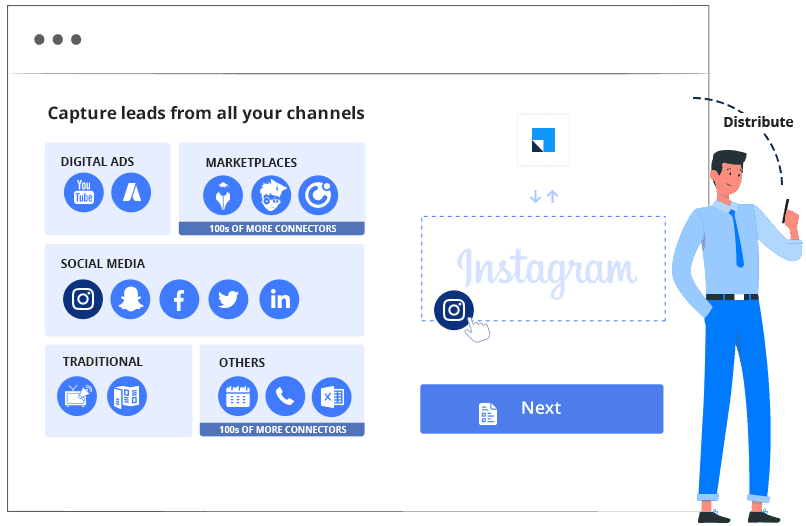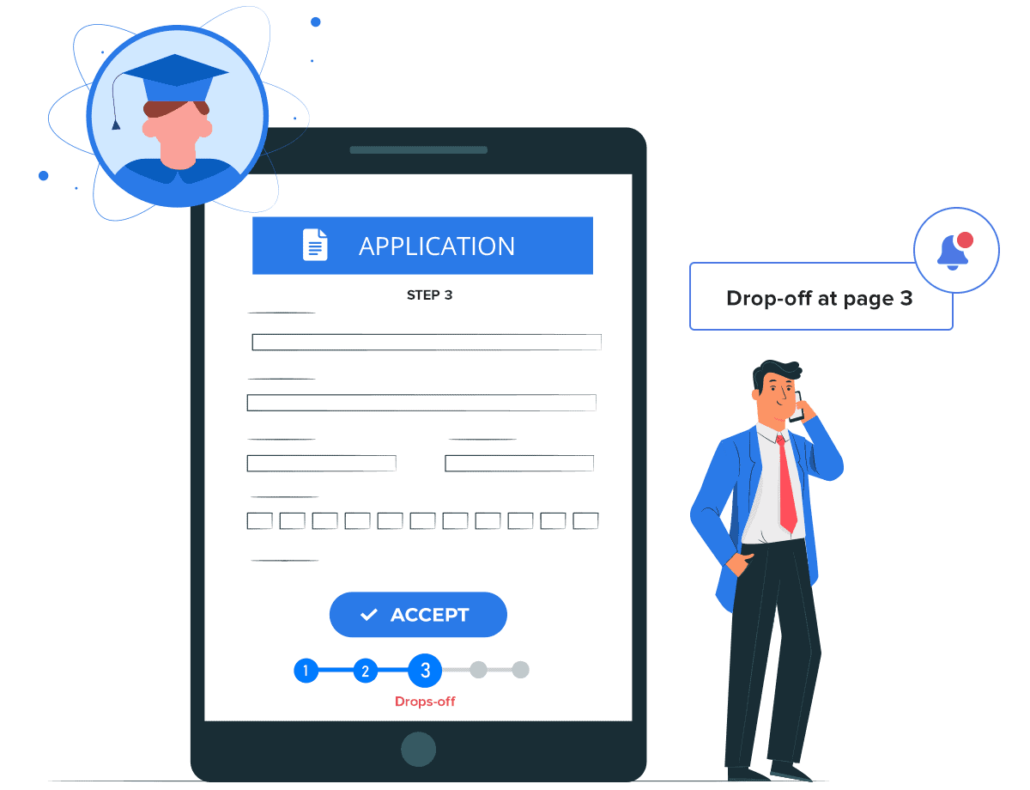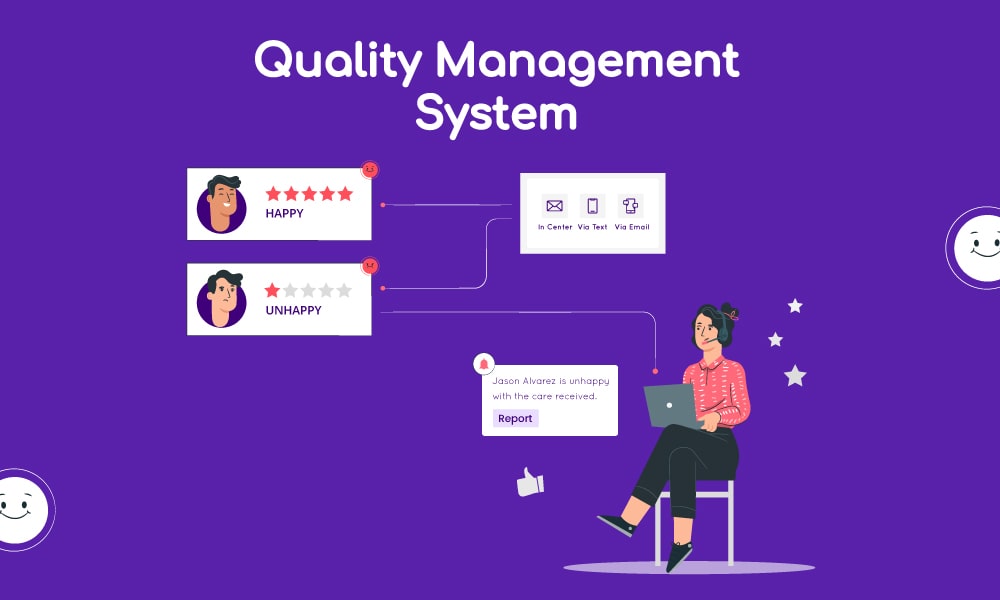“Sound strategy starts with having the right goal,” says Michael Eugene Porter, a renowned American academic and business strategist. Despite clear goals, the admission strategy for schools is a little complex as it involves educating, engaging, and influencing parents and students at multiple touchpoints.

Want to cut to the chase? Get enrollment tips directly from the top 6 industry experts.
Until last year, students preferred taking admission to a school that is closest to their residence. And then COVID happened. Suddenly everything went digital. Online learning became the new normal, and admissions from regional candidates took a downturn. Distance education started seeming just fine.
The prevailing situation has impacted schools and colleges the most. However, there is an upside. While distance is no longer a constraint for students to enroll in a course, it shouldn’t be for colleges either. The right approach can encourage students from different geographies to consider your school and boost admissions. How?
We spoke to the directors and admission heads of training schools and colleges about how they are keeping up the admission rates during this pandemic time. The respondents acknowledged that digital media and admission management platforms are of great help.
However, strategic deployment is how schools are achieving their targets. So we compiled a 5-step admission strategy for schools. I hope these admission ideas will help you too.
A 5-step admission strategy for schools
1. Leverage digital platforms
On average, Americans spend more than 6.31 hours on the internet daily. Lockdowns and social distancing have further increased digital content consumption. Thus, digital is the best way to reach out to your prospective students.
The most used media among teenagers are Instagram (25%), Facebook (24%), Snapchat (22%), and Youtube (16%), followed by Twitter and other media. Fortunately, all these media allow targeted advertisements on their platforms. You should reach out to your students through the channels of their preference and platforms where they are most active.
But first, you will need thorough user research. You can also start well ahead of admissions time and split test on different platforms. This way, you will know which medium works for you, and accordingly, plan your campaigns. Few things to keep in mind here:
- Engage with students. Reciprocate their interactions. For example, if it’s a negative comment, address it. If it’s a positive comment, appreciate it. Social media is all about two-way communication.
- Brainstorm on the messaging. Whether you are just testing the waters, or you are about to roll a campaign – be clear with your messaging. Do you want to create urgency? Do you care about your student’s future? Ensure that you convey the message well in your ad copy.
- Be prepared for the next step. Keep your website ready. Make sure the prospect lands on the correct page after clicking the ad.

Are you looking for landing page design inspirations for inquiry forms?
Check out this e-book.
Digital media gives us the liberty of iteration. Unlike print media, we can correct ad copies without much expense. Use this liberty to keep improving your digital impact. Track and measure your efforts and iterate to improve.

Now let us move on to the second step in your strategy for multiplying admissions.
2. Organize inquiries (leads)
Anyone can feel overwhelmed when inquiries start popping in. But the real challenge lies in converting them. Do you want to keep switching between Facebook, Instagram, Snapchat, etc. to see if you got any inquiry and respond to it? Or will you immediately switch to your email or notification while drafting a response to the previous lead? Remember – multiple channels mean exponential distractions.
You’ll need a centralized system that captures leads from different channels. This way, you need not switch between Facebook or Snapchat to respond to the lead. You can do it from this central system itself. Whatever the media, you’ll be able to send the response. But what exactly is this system?
Administrators call it Education CRM.
CRM corresponds to Customer Relationship Management. The CRM system designed specifically for schools and colleges is called Education CRM. Whenever a student interacts with your website, ad, email, or even calls for information, the CRM system records it. It keeps a tab on all further activities that a prospective student performs like downloading a brochure or syllabus, following your social handle, liking your ad, emailing you for details, playing a video, taking a campus tour, and many more.
Education CRM also segments your leads into different buckets based on parameters like age, location, education status, course preferences, and their activities on your website. It is usually an automated process and helps colleges understand the intent of the prospective student and accordingly prioritize follow-ups.
Once you have organized the inquiries from different sources into a central system, you’re free from the hassle of switching between different platforms. All you need to do now is – assign leads to your admission teams and interact with them.
3. Distribute inquiries
During the peak admission season, large colleges and training schools also sometimes outsource inquiries to call centers. Call centers take care of the initial conversations with prospective students, understand their interests, and mark whether it’s a genuine inquiry or just a casual one. Colleges call this a nurturing stage. Call-center agents pass valid leads to the admissions team. Else, they follow-up further and try to influence the prospect for admission. If how to convince parents for school admission is also a concern, then train your admission officers/call center agents to counsel and inspire parents as well. In this case, only query resolution will not suffice.
Education CRM can automate your inquiry (lead) distribution task as well. Based on the candidates’ profiles and interactions with your campaigns, it assigns scores that help process the distribution task. It determines who can handle the lead – call center or your in-house admissions team. If the system finds a strong prospect, it allocates it directly to the admission team.
Even if you’re not engaged with call-centers to handle inquires, the distribution of leads is still applicable. An admission team consists of several members with different expertise. For example, there will be members who can help candidates with filling an application form. At the same time, you’ll have members who can guide students about financial aid. Moreover, you will also need to determine who is available to attend the call now.
Therefore, based on the nature of the inquiry, the call must be directed to the perfect person to handle it. It will enhance the student experience and build trust.
4. Follow-up and engage with prospective students
Don’t let the communication dry. The prospective student who has dropped a query in your portal would have done the same on many other admission portals. Directors say that calling candidates immediately after receiving their application increases their likelihood of enrolling in a course. Thus, engage with students as soon as they interact with you. If they don’t receive the call, drop a text or an email. If they don’t respond, reach them out through ads, follow-up with them, suggest a counseling session, offer a virtual campus tour; but don’t just give up on a promising candidate because of communication issues.
Here are some ideas to engage with students through digital media. These marketing ideas for school admission are very efficient.
- Launch social media campaigns and offer rewards for participation
- Provide interactive virtual campus tours
- Live chat sessions with trainers, alumni, and existing students (in line with open houses)
- Provide online counseling sessions and career guidance webinars
- Introduce short online courses to develop an interest in your curriculum
- Launch contests or competitions to encourage talent and create awareness about your college.
CRM makes it easy to follow up with candidates
You might wonder if it is possible to follow-up with hundreds of prospective students in a day. Well, if you remember, we spoke about automation a while ago. Education CRMs can automate email, SMS, WhatsApp responses as well. If a prospective student is not responding, you can schedule a follow-up email for next week. If you’ve to call a candidate, you can create a task reminder for your admission team. In short, using CRM, you can accomplish results in hours that could have otherwise taken weeks.
Another challenge you can foresee here is lead scoring and prioritization. Based on prospective students’ activities on your website, social media, and other campaigns, you can prioritize calling them.
First come, first serve is not the best idea as it’s worth investing efforts in talking to engaged and interested candidates first. In Education CRM, you can assign specific scores to specific activities. You can customize the lead scoring method to match your school’s criteria.
I’ll suggest reading the article on student engagement strategies that highlights some good points in this regard.
Let us move on to the final step of the admission strategy for schools.
5. Make your admission process as simple as possible
Out of thousands of inquiries, only a few take admissions. Many leads do not convert because they could not comply with a tedious admission process. Therefore, make your admission process as simple as possible. Here is how.
- Today’s students are digital natives. They are more comfortable applying online instead of standing in queues and filling paper-based forms. You should also adopt a paperless application process to match the preferences of students.
- Answer their queries instantly. A self-serve portal or a chatbot on your website can help in resolving multiple inquiries simultaneously. If a student feels stuck while filling the application, he can get an immediate response from the bot. It will also reduce the number of incomplete applications, which will eventually reduce your admissions team’s efforts.
- Resolve financial aid inquiries as soon as possible. Since such leads require a counselor, you can schedule a call through a CRM system at a time that is comfortable for the candidate as well as your team member.
- Provide complete information on your website about courses, faculties, placements, grants, etc.
- Inform the candidates about their application status and notify whenever there is a change. You can also provide a self-serve portal where students can check the status of their applications, important dates, etc. On the self-serve portal, your admission team can step in whenever required.

Education CRM can simplify almost every stage of the admission journey. Even after the enrollment, you can integrate the CRM with the Student Information System (SIS) or Learning Management System (LMS) for classroom engagement.
Useful resource: 6 workflow templates to increase your admission efficiency by 40%
Wrapping up
An effective admission strategy for schools is one that inspires students towards learning right from the beginning. You know that your school is the best, but the potential students might not. A little effort in streamlining the admission strategy for your school can result in ever-increasing enrollments.
Admission software or Education CRMs are the best for making your admission process more efficient. With cloud-based Education CRM, you don’t even need any installation. It is a one-stop automation solution to:
- Capture inquires from different digital and offline channels
- Prioritize inquiries based on the candidates’ activities and engagement with your campaigns, content, and website.
- Map and distribute leads to the admission team members based on their department (general inquiries, counseling, financial aid discussion, etc.) and availability.
- Schedule follow-up emails and call reminders.
- Create and launch self-serve portals for paperless applications.
- Engage with prospective students across the enrollment journey and leverage different touchpoints.
Explore:
Admission FAQs
To improve school strength, you’ll need to plan a strategy focusing on educating, inspiring, and engaging with students and parents. You can also use a School CRM software to manage your enrollment processes.
You can launch digital campaigns to engage with students. Also, counseling sessions with experts or career guidance programs can help in attracting students for admission.
The strategy that works for most of the schools includes campaigns to motivate students, respond to student inquiries, use technology and automation, and engage with students. Read 10 practical tips for increasing student enrollment.








